
Report: Gerard Huissen
History, and, of course, archaeology, enjoys an increasing interest nowadays. Throughout the year hundreds of thousands of people visit archaeological excavations, ancient cities and museums. Also organizations that pay attention to these topics, such as Roman Ports, got out there and make some noise. What motivates all those people to look at the past? Of course the art, architecture, etc., but ultimately, we look mainly at the way people lived in the past, what they did, how they set up their lifes and tried to solve their problems. In short: how much did our ancestors differ from us?
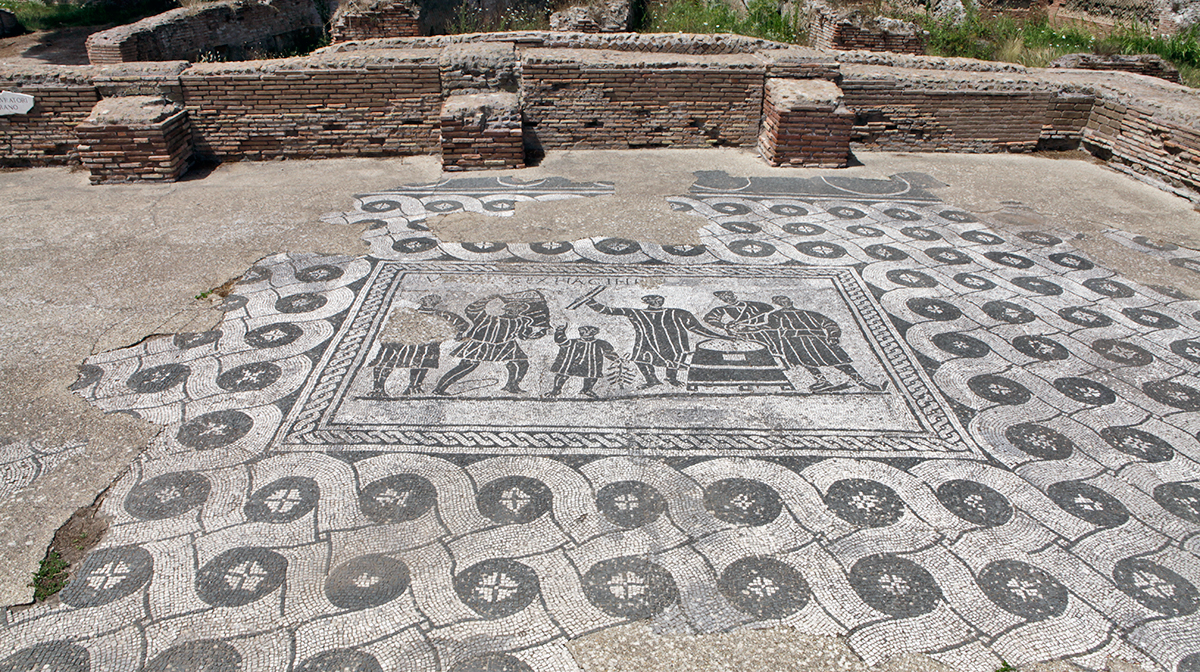
Everyday life of the common man

However, we do have still a source of some citizens. A resource that brings us even closer to a person than we ever imagined and sometimes even shares a personal side of what once was ruling his life. I’m talking about the many ancient cemeteries that survived the test of time.
There have been found many cemeteries around the world. One more spectacular than the other. Because we are concerning with Roman ports, I would like to take you to my favourite cemetery, the necropolis of Isola Sacra.
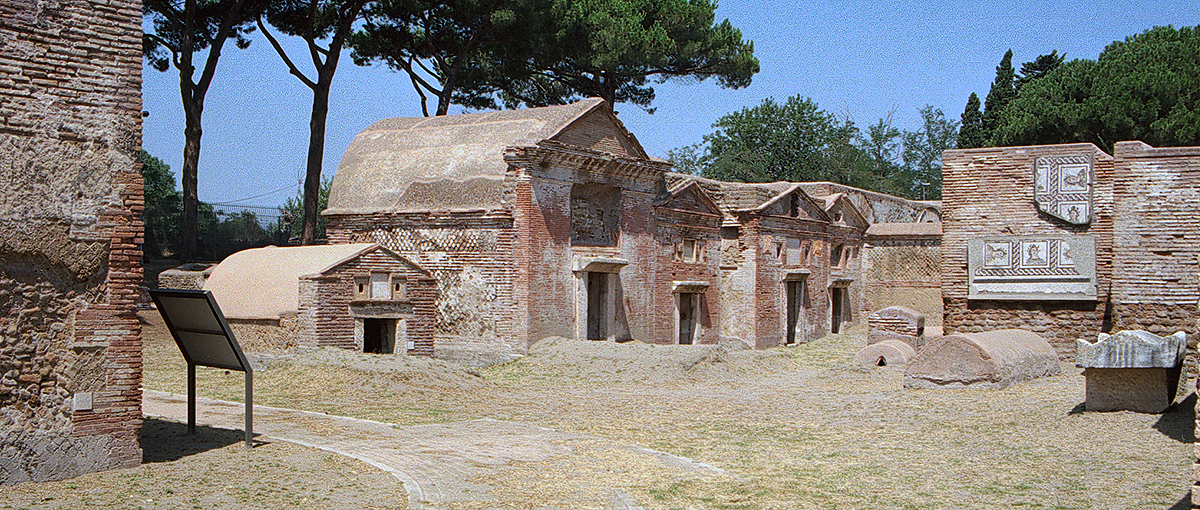
IIsola Sacra is an artificial island formed on the west side by the sea, on the south and East side by the River Tiber (which bends) and the canal, dug by Trajan, to connect the Portus Harbour with the river Tiber on the north side. From Ostia the island was reachable by a ferry across the Tiber and from Portus via a bridge over the Canal of Trajan. The ' inhabitants ' of this Cemetery (as far as we know) all came from Portus.
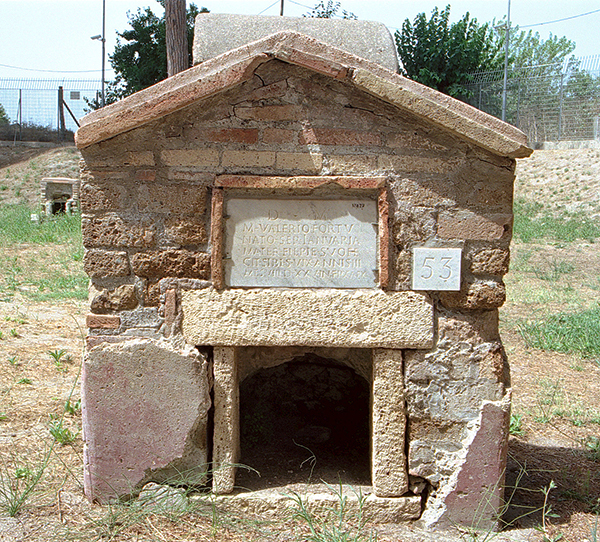
on the cemetery from Isola Sacra. 8
All found texts on sarcophagi, tomb inscriptions etc. are classified in 1952, described and interpreted by the Swedish Classicist Hilding Thylander6.
In 2007 a new research, with improved insights, was published under the direction of the head of the Finnish Institute in Rome Anne Helttula7. On these texts many tragedies can be read. Because these are the only personal data of the people who lived and worked in that place at that time, any tangible evidence must be nurtured. This brings us to the topic I actually would like to talk about
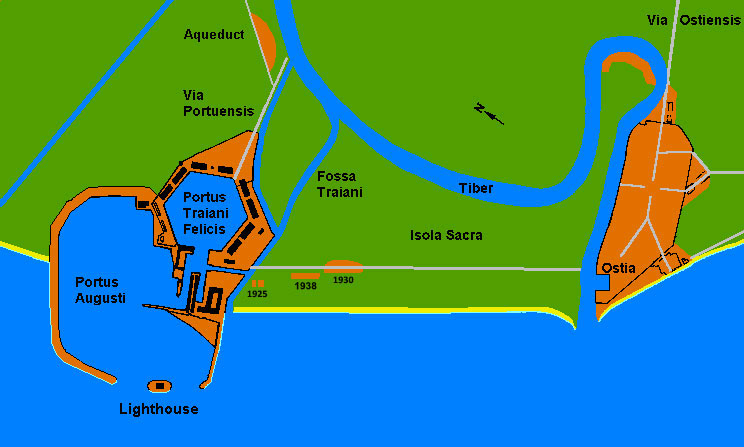
The Canal Tombs.
In 2005 I drove along the official necropolis of Isola Sacra towards the Via Redipuglia, the road that leads to Fiumicino Sud. Along this street, in line with the large cemetery, I saw a small, bad railed excavation with a number of tombs. A large sign, which was completely faded, stood desolated at an unreadable distance away from the fence.
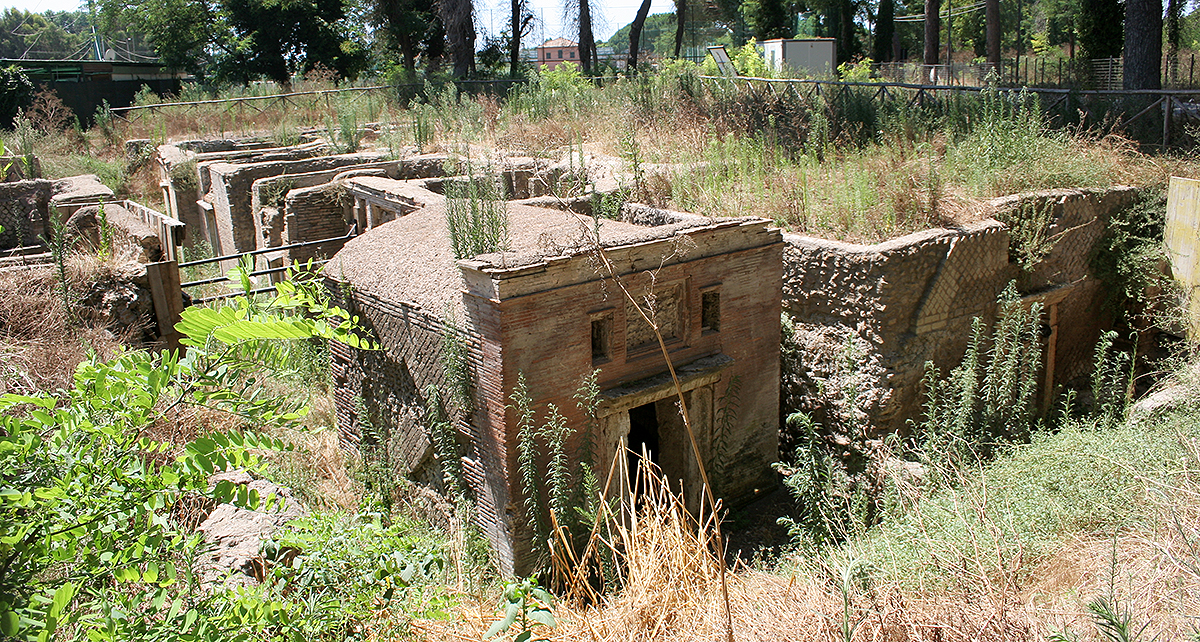
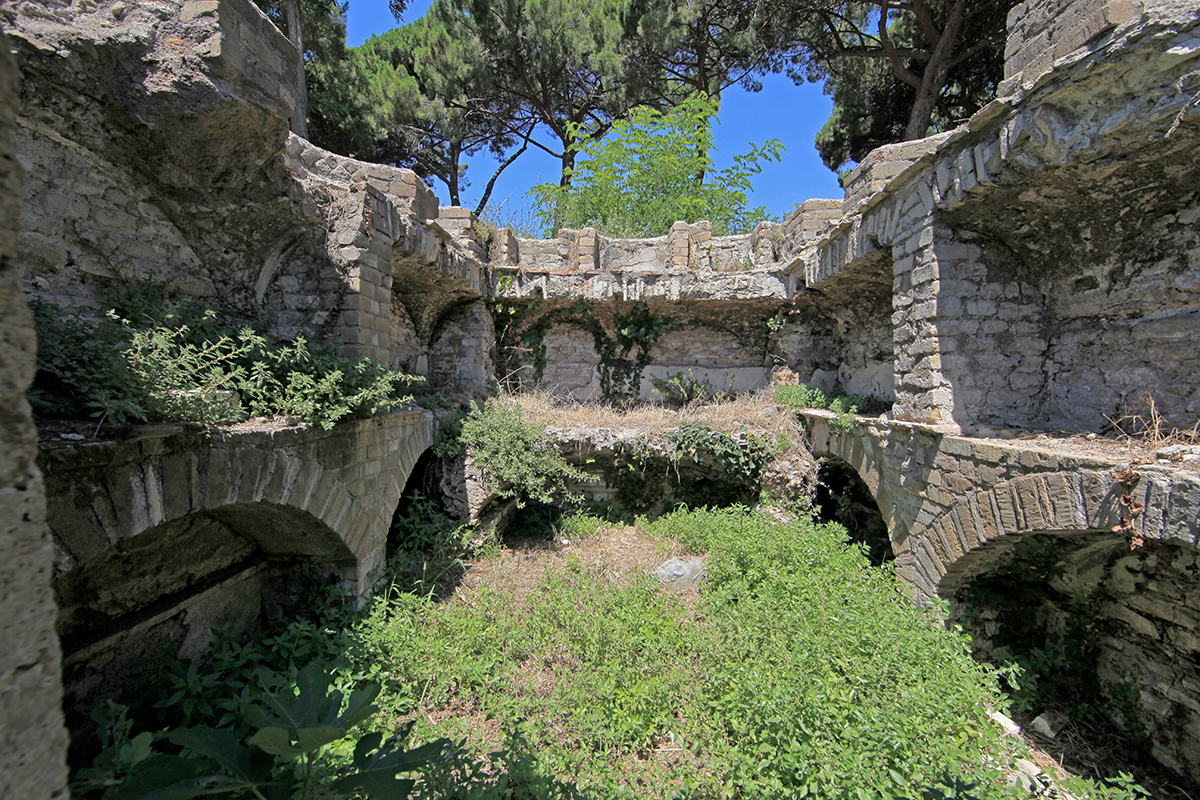
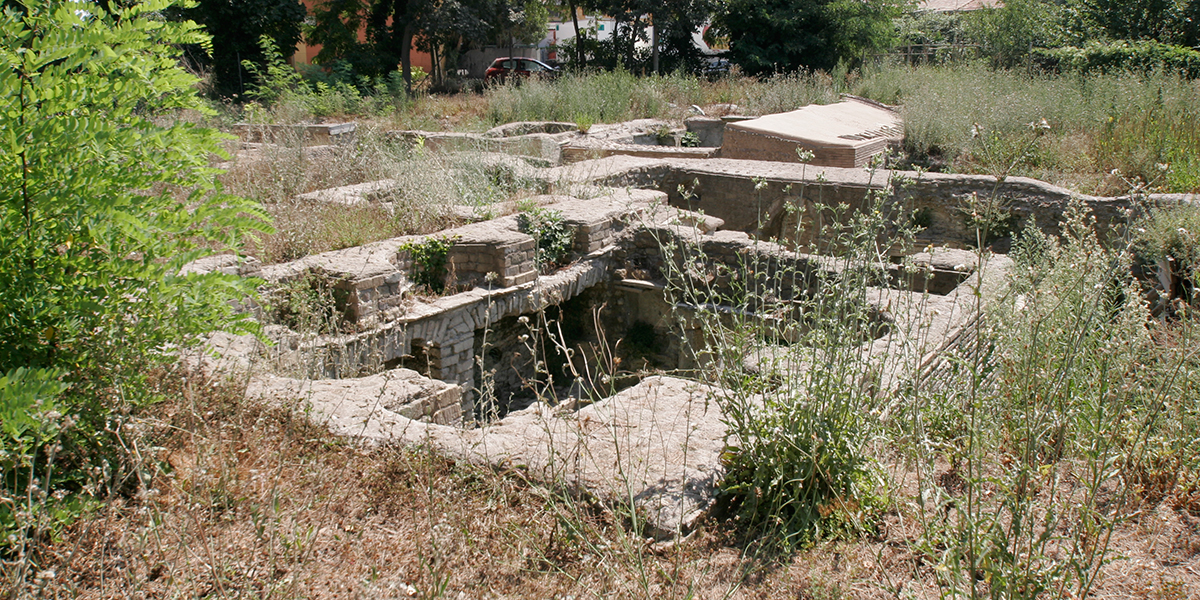
Time to check it out myself. The adjacent football field was to be renovated and the fence was partially removed. As a true explorer I went down into the great pit with the tombs which I shot with my camera from every possible angle9. From above I noticed that there were more tombs to excavate, and some had already been entered by a hole in the ceiling. On the east side of the cluster of tombs the walls were propped up.
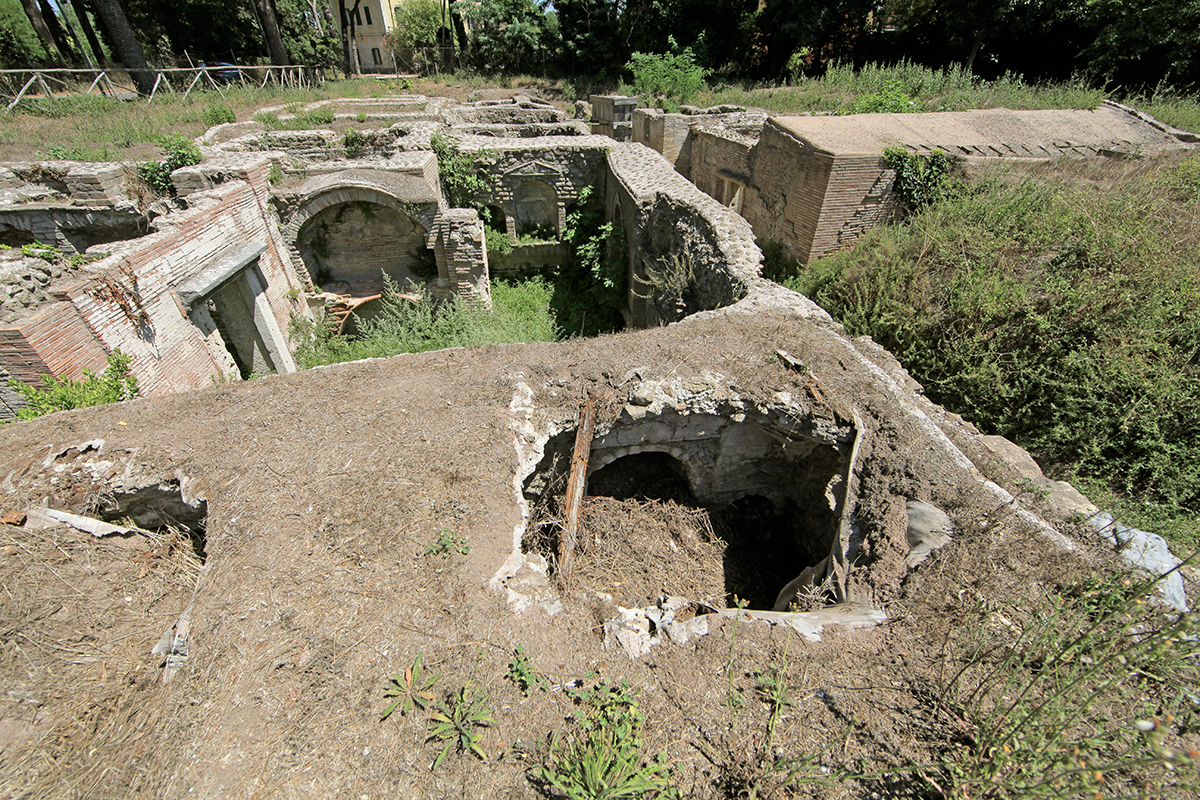
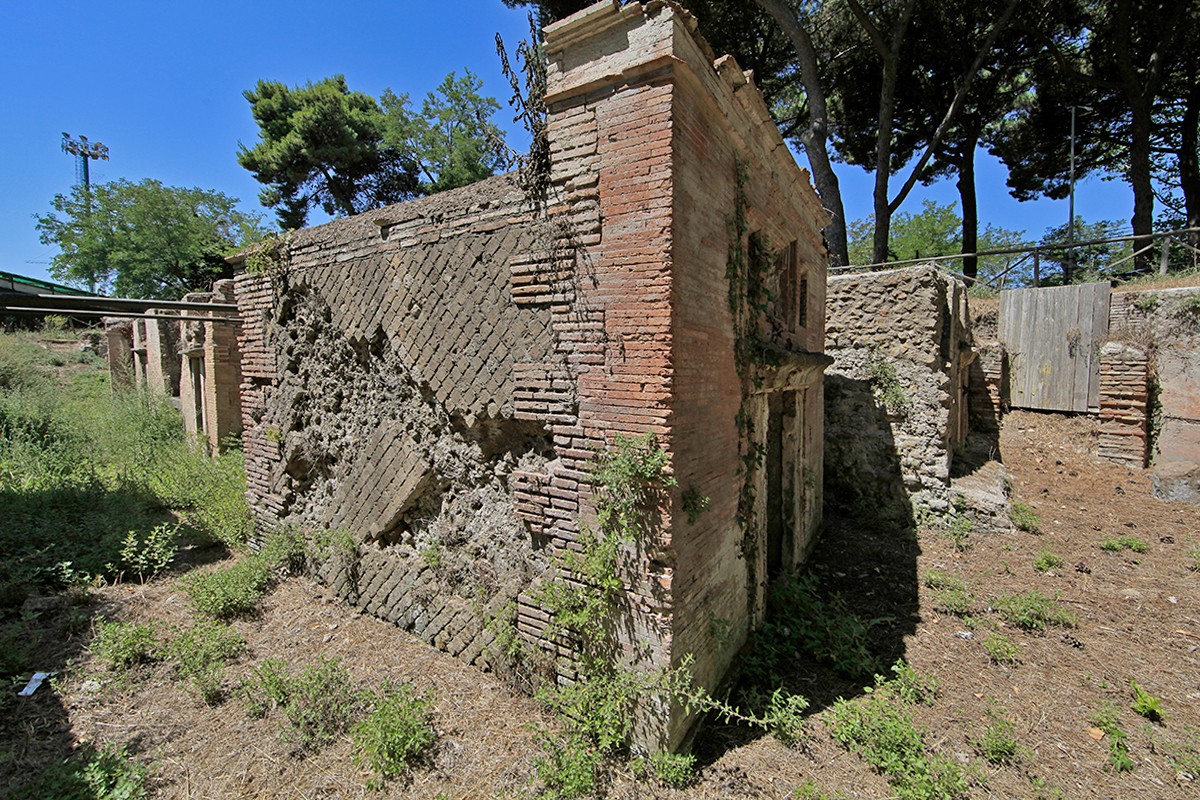
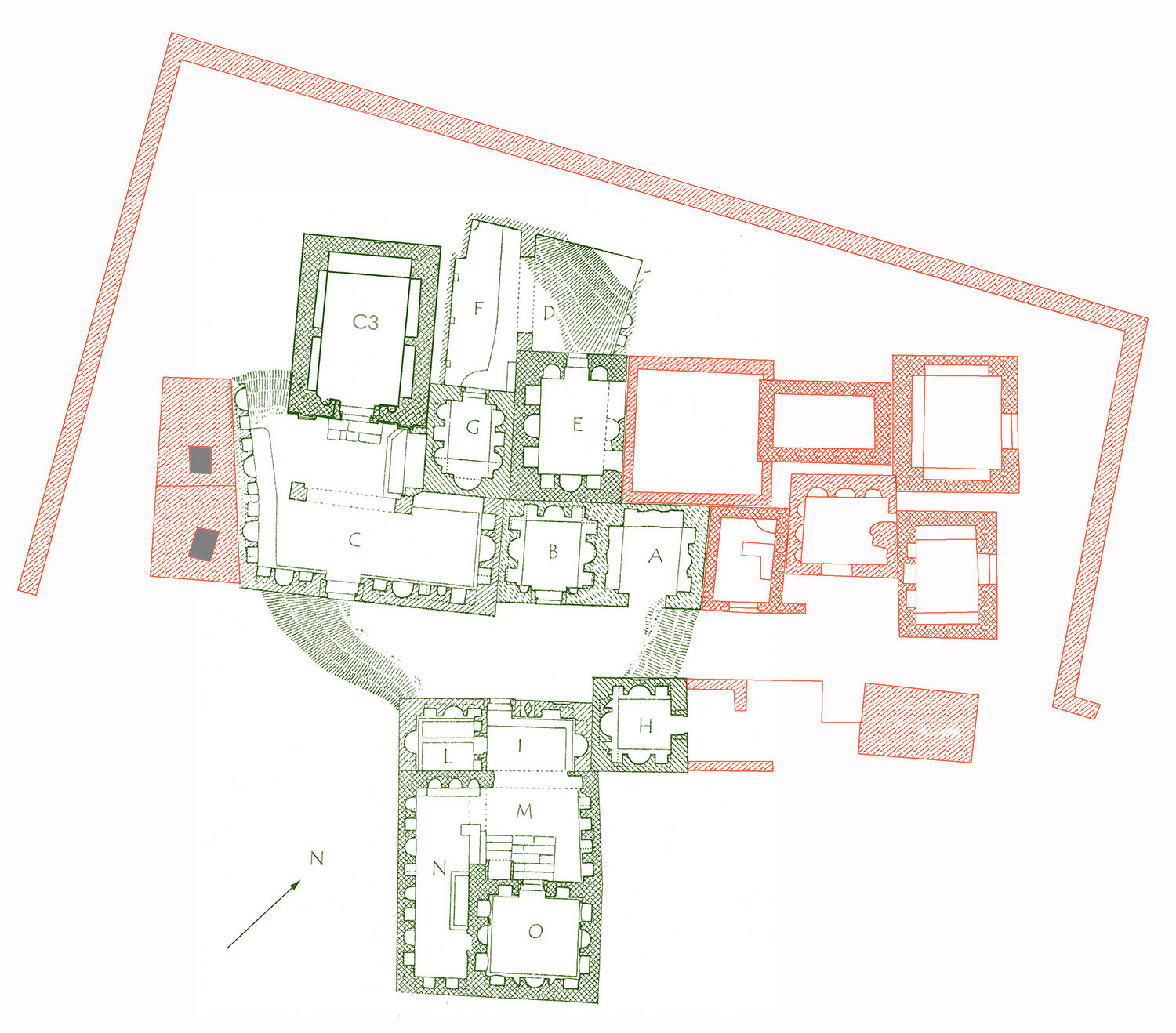
notes:- 1:Read our article 'Santa Severa, a town behind a bathing resort'
- 2:Floor mosaic in the Aula dei Mensores (hall of the grain measurers) at Ostia.
- 3:The text says: V[...]SEXHAGIHI[...] Becatti interpreted this as v[ilici] sex h(orreorum) Agi(lianorum) hi[c], "Here are six employees of the horrea of Agilianis"
- 4:http://ostia-antica.org/valkvisuals/index.htm
- 5: Read our article 'A place without fear'
- 6: Hilding Thylander: Inscriptions du Port D'Ostie: Lund-CWK Gleerup: 1952
- 7:Le iscrizioni sepolcrali latine nell'Isola Sacra. Sotto la direzione di Anne Helttula-edizione a cura di Anne Helltula, Tryggve Gestrin, Maijastina Kahlos, Reija Pentti-Tuomisto, Pekka Tuomisto, Raija Vainio en Risto Valjus. Roma 2007
- 8: The text on the tomb tells us that it had been made for Marcus Valerius Fortunatus by his mother Sergia Ianuaria, but also for herself. Marcus Valerius died at the age of three years, eight months and twentyfive days.
- 9:See http://ostia-antica.org/valkvisuals/html/canaltomb_01.htm






 We are committed to providing versions of our articles and interviews in several languages, but our first language is English.
We are committed to providing versions of our articles and interviews in several languages, but our first language is English.